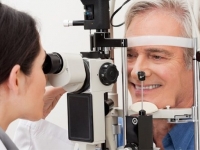If it were not for vaccinations … Who risks more by refusing vaccination
 For the last couple of decades, society has split into opponents and supporters of immunization. As a result, the consequences of massive vaccination refusals were the increasing frequency of almost forgotten childhood diseases, some of which ended sadly. Many parents believe that they say the vaccine does not guarantee that the child will not get sick. Yes, even vaccinated children are sick: but the disease is mild, besides collective immunity is supported in kindergartens and schools. Immunization week started in Europe and Ukraine yesterday, so it’s time to learn more about vaccines.
For the last couple of decades, society has split into opponents and supporters of immunization. As a result, the consequences of massive vaccination refusals were the increasing frequency of almost forgotten childhood diseases, some of which ended sadly. Many parents believe that they say the vaccine does not guarantee that the child will not get sick. Yes, even vaccinated children are sick: but the disease is mild, besides collective immunity is supported in kindergartens and schools. Immunization week started in Europe and Ukraine yesterday, so it’s time to learn more about vaccines.
Why do we need vaccinations?
Annually, vaccines save about 2.5 million children in the world, according to UN data. For the prevention of a number of diseases in general, and not just children’s diseases, there is no other method besides vaccination. For comparison: in the 20th century, polio killed more than 16 thousand people in the world, smallpox – more than 30 thousand. And as of 2014, there were only 500 cases of polio, and then in Nigeria, Pakistan and Afghanistan. According to UNICEF statistics, 80% of newborns in Congo (Africa), where the level of vaccination of children is not that low – it is practically absent, die from smallpox, polio, tetanus and other infectious diseases, which are no longer remembered in Europe.
However, children from tetanus again began to die in Ukraine, and the measles epidemic, which also ended in the death of several babies, is still not completely eradicated. Parents are afraid that the vaccine will do more harm than good, because the vaccine contains weakened or live viruses. Thanks to vaccination, our immunity learns to produce antibodies to viruses, the body, as it were, “learns” to recognize the danger. And when infected with real viruses, the immunity is actively prepared to resist the disease.
One unvaccinated child “substitutes” already vaccinated
Thanks to vaccination creates a collective immunity of others. If more than 80% of children in a team are vaccinated, then with an outbreak of the same measles, collective immunity works, which protects unvaccinated children. Also in the adult population: if 75-94% of the population is immunized, then the rest who cannot be vaccinated because of contraindications protects the collective immunity from disease outbreaks. Thus, the health of all children in a group and, as a result, the health of an entire nation depends on the choice of each individual parent. Yes, it can get sick and vaccinated child. But in this case, the disease will pass without complications and in a mild form, without a temperature of under 40, exhausting cough or cramps.
And in relation to such a complex and dangerous disease, like tetanus, which can be infected by getting injured (cut, abrasion, puncture, etc.), the vaccine is the only way to prevent it. But what about the complications after vaccinations and even deaths, some indignant parents exclaim! Immunologists and pediatricians note that a normal possible adverse reaction of a HEALTHY child’s body to a vaccine is redness at the site of administration of the drug and low-grade (from 37.2 to 38 degrees) temperature, not more. To exclude the possibility of even the slightest post-vaccination complications (AOP), the child must be completely healthy, not have contraindications to vaccination.
What every parent should know before vaccination
A cold (even mild), already existing diseases in a child is a reason to postpone vaccination. The individual characteristics of the baby are also important, for example, congenital allergies or nicotine intoxication: in such conditions, it is simply useless for the baby to enter the vaccine when there is no vaccine. Learn everything about the upcoming vaccination, the vaccine, contraindications, etc., inform pediatricians, websites of relevant departments, volunteer organizations.
Ask a health professional to show a bottle of vaccine: the thermostat will show that the drug was stored in appropriate conditions. If the calendar vaccination coincides with the period of mass incidence of influenza and ARVI, and your child is healthy (a pediatrician must be examined before the child is vaccinated), then try to choose a time when there is a minimum number of sick children in the clinic. In order for your child not to become infected and the time of vaccination and infection of the same respiratory viral infection did not match. If you avoid the queue in which your baby can get infected, it is impossible, go together: while one parent is waiting in the queue, the second one can sit with the child in a car or in a cafe.



